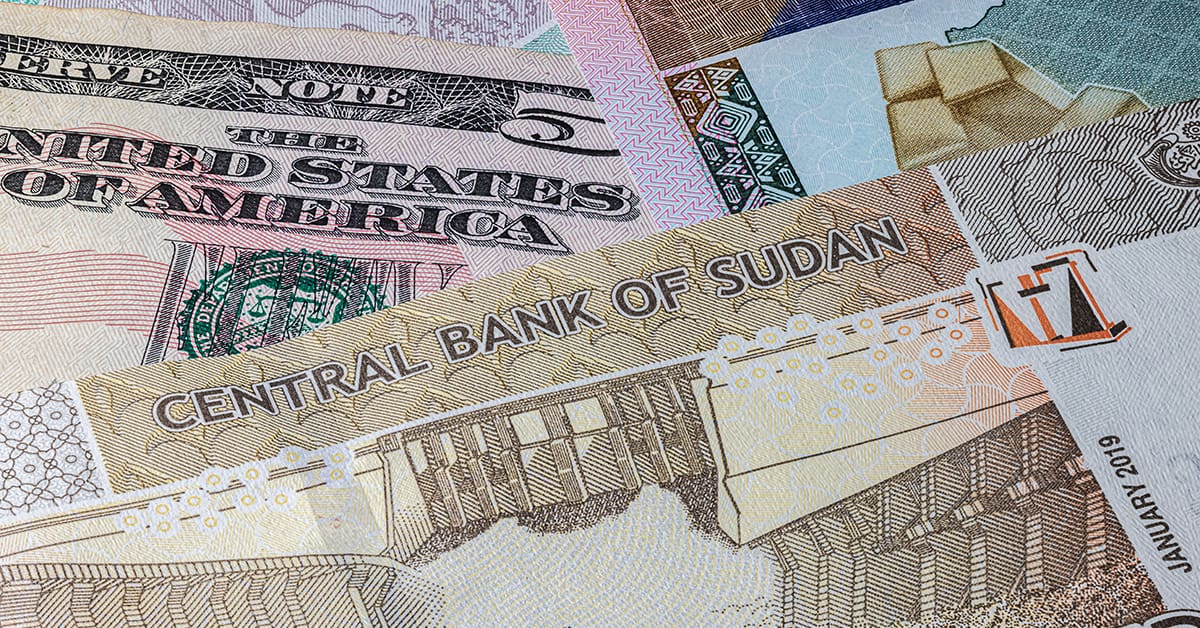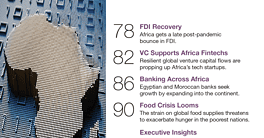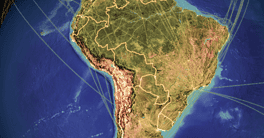Several African countries are queuing up for debt abatement after the Paris Club agreed to debt relief for Sudan.

Pandemic-caused disruptions have pushed debt levels higher in Africa, which could put external debt service at more than an estimated $87 billion for 2021 and an additional $598 billion for 2021-2025 as of February 2021, according to the United Nations Development Program.
Countries that are either in debt distress or facing high risk of debt distress are mostly in Sub-Saharan Africa, but debt circumstances vary widely among regions.
According to new data released at the end of August by the World Bank, African countries classified as carrying a “high risk of external debt distress” included Kenya ($18.3 billion), Ethiopia ($11.8 billion) and Cameroon ($9.4 billion).
Ethiopia “risks being the third” country to default in 2021 after Belize and Suriname. Mozambique, Republic of Congo and Tunisia are other African countries at “high” risk of default, according to researchers at emerging markets economic advisory Tellimer.
Mozambique ($7.5 billion) and South Sudan (data not available on the World Bank resource but previously calculated at over $1 billion, or 34% of GDP) have already been judged to be in external debt distress by the World Bank. However, the World Bank deems other African countries as having a low external debt default risk profile, such as Tanzania, which has an external debt of $3.5 billion.
Zambia, on the other hand, had already tipped into default in 2020 after it reneged on repayment of a $42.5 million eurobond coupon.
It is against this backdrop that African governments have frantically been seeking debt rescheduling, forgiveness and treatment under the Heavily Indebted Poor Countries (HIPC) initiative and other frameworks. Sudan managed to score a debt forgiveness arrangement with the Paris Club, which agreed in mid-July to cancel $14.1 billion in debt owed by the African country and consented to an “exceptional” consideration under which “no payments are expected from Sudan” until December 2024.
Sudan was the 38th country to receive debt forgiveness from the Paris Club. This is a critical arrangement, according to Jan Friederich, the head of sovereign ratings for Africa at Fitch. Oxfam, meanwhile, says South Sudan was “spending 11 times more on debt repayments than on education, health and social protection combined” prior to the debt forgiveness.
“The restructuring is critical for Sudan, which carries a very high debt burden after many years of weak economic management exacerbated by sanctions that were only lifted following the change in government in 2019,” says Friederich.
Using A Hybrid Framework
With Sudan able to focus on economic rebuilding after the debt forgiveness, neighboring Ethiopia—which is battling a crisis emanating from unrest in the Tigray region—also hopes to strike a debt restructuring deal under the Group of Twenty’s (G20’s) Common Framework.
The framework brings together the G20 and Paris Club to coordinate and cooperate on debt treatments. According to the World Bank, Ethiopia has an external debt mountain of over $11 billion, and for Friederich, the debt pressures that triggered Ethiopia’s recourse to the Common Framework are related to “liquidity issues rather than solvency” challenges.
A Common Framework restructuring for Ethiopia is likely to be “about rescheduling of debt, rather than haircuts or deep present value reductions” of its sovereign debt, he says. This means that the Paris Club is more likely to be inclined toward comparable treatment for Ethiopia “to avoid a distressed debt exchange on debt to private sector [creditors].”
But unlike Zambia, Ethiopia’s debt appeared to be sustainable prior to the country’s entry into the Common Framework, notes Patrick Curran, a senior economist at Tellimer.
Total public debt for Ethiopia is below 60% of GDP, with much of it “on highly concessional terms,” which means that investors are “largely surprised by Ethiopia’s decision to enter the Common Framework,” Curran says. Better still, “most [investors] do not see a restructuring as necessary, given Ethiopia’s relatively manageable” debt stock.
In sharp contrast, Zambia, which already defaulted on a eurobond, faces “real solvency issues” and also applied for debt restructuring under the Common Framework. Reaching a settlement with creditors is a top priority for newly elected President Hakainde Hichilema.
A wave of optimism has characterized Hichilema’s leap to victory in an August plebiscite. Michael Nderitu, an analyst and head of trading at AZA Finance, notes that “Zambia’s eurobonds have also gained” since Hichilema’s predecessor, Edgar Lungu, conceded defeat.
Investors owed by Zambia “need not worry” about the southern African country’s debt default position, says Hichilema. “We will arrive at an amicable and mutually beneficial solution to our debt. We will engage transparently and in good faith,” he wrote on Twitter.
With more African countries likely to line up for debt treatment, the International Monetary Fund (IMF) says that it is fully engaged in the region to avoid economic fallouts from the pandemic and from high-risk debt profiles. It is because of this that the IMF is offering emergency financing for the pandemic response and has made historic Special Drawing Rights allocations in addition to its continentwide lending programs.
“More countries may request Fund support to help finance their recovery from the crisis,” notes an IMF spokesperson. “In some cases, debt treatments may be needed to either reschedule repayments or alleviate liquidity pressures, or to restructure their debt if it has become unsustainable,” the spokesperson adds.
Still, highly indebted countries such as Zimbabwe and Zambia—which engaged the IMF for a financial package—haven’t been able to borrow more, owing to their failures to repay debt arrears. The Bretton Woods institution acknowledges that it is important that it avoid premature withdrawal of fiscal support in some cases, as it could have an impact on slowing containment and recovery from the pandemic.
It is, however, equally important for African countries to “consolidate their fiscal positions” to “ensure debt and development strategies are sustainable, without jeopardizing longer-term growth” prospects, says the IMF.
The debt vulnerabilities in much of Sub-Saharan Africa are less pronounced in North Africa, where some sovereigns could attract financing through boosts in foreign direct investment and IMF loans.
That has been the case Egypt. Despite reporting a surge of $11.1 billion in external debt for its fiscal third-quarter ended in March, Egypt took the total external debt stock to $135 billion, according to the country’s central bank. However, Egypt recorded a 47.3% surge in foreign direct investment to $1.4 billion during the same quarter.
Morocco’s ample access to domestic and official funding on concessional terms and the “favorable risk [premiums] it enjoys in international capital markets underpin its muted debt affordability projections,” despite having a higher debt stock, write the authors of a North African debt-trend note from Moody’s.
North African sovereigns have demonstrated that they can leverage alternative capital markets for funding requirements. Moody’s underscores that Egypt issued green bonds for the first time in 2020 and plans to float the first sukuk capital later this year.
Other countries across Africa could lean on similar approaches. Although some investors could be jittery on sovereign and corporate bonds issued in 2020 in markets like Cote d’Ivoire, Nigeria and South Africa, others have been oversubscribed.
It comes as “investors have yet to understand the full impact of the pandemic on Africa’s economies and are therefore looking for safer” investments on the continent, says Kadi Fadika-Coulibaly, managing partner of Hudson & CIE, an Africa-focused financial services company. Fadika-Coulibaly thus foresees “rapidly increased investment in the African corporate bond market.” Other analysts are less bullish on sovereign bonds, given the debt vulnerabilities of many states.
The African Development Bank (AfDB) stresses that the composition of Africa’s debt continues to shift toward commercial and non–Paris Club creditors, and from external to domestic sources. The commercial creditors and non–Paris Club official creditors have meanwhile increasingly pumped up new financing to African governments, according to AfDB.



